
What's Next? Climate Change & The Adirondacks
Tuesday, February 19, 2019
On February 12, 2019, our Director of Government Relations Kevin Chlad delivered testimony at the Senate Environmental Conservation Committee Hearing on the Climate and Community Protection Act (Senate Bill 2992). Below is some information from the presentation he provided.
The Adirondack Park & Climate Change
The Adirondack Park is a National Treasure, and we have it right here, in upstate New York. At 6.1 million acres, it is the largest park in the contiguous United States.
The Park itself is ecologically significant, in that it is the largest intact temperate deciduous forest in the entire world. With over 2,800 lakes and ponds, and 1,500 miles of rivers that are fed by an estimated 30,000 miles of brooks and streams, the Adirondacks are an important source of clean water, a refuge for wildlife, and a sponge for greenhouse gases like carbon dioxide. The Park is a patchwork quilt of public and private lands, with slightly more than half in private ownership and the remainder consisting of ‘forever wild’ Forest Preserve lands, protected by our state’s constitution. This is the strongest conservation law in the world, and something New Yorkers take great pride in.
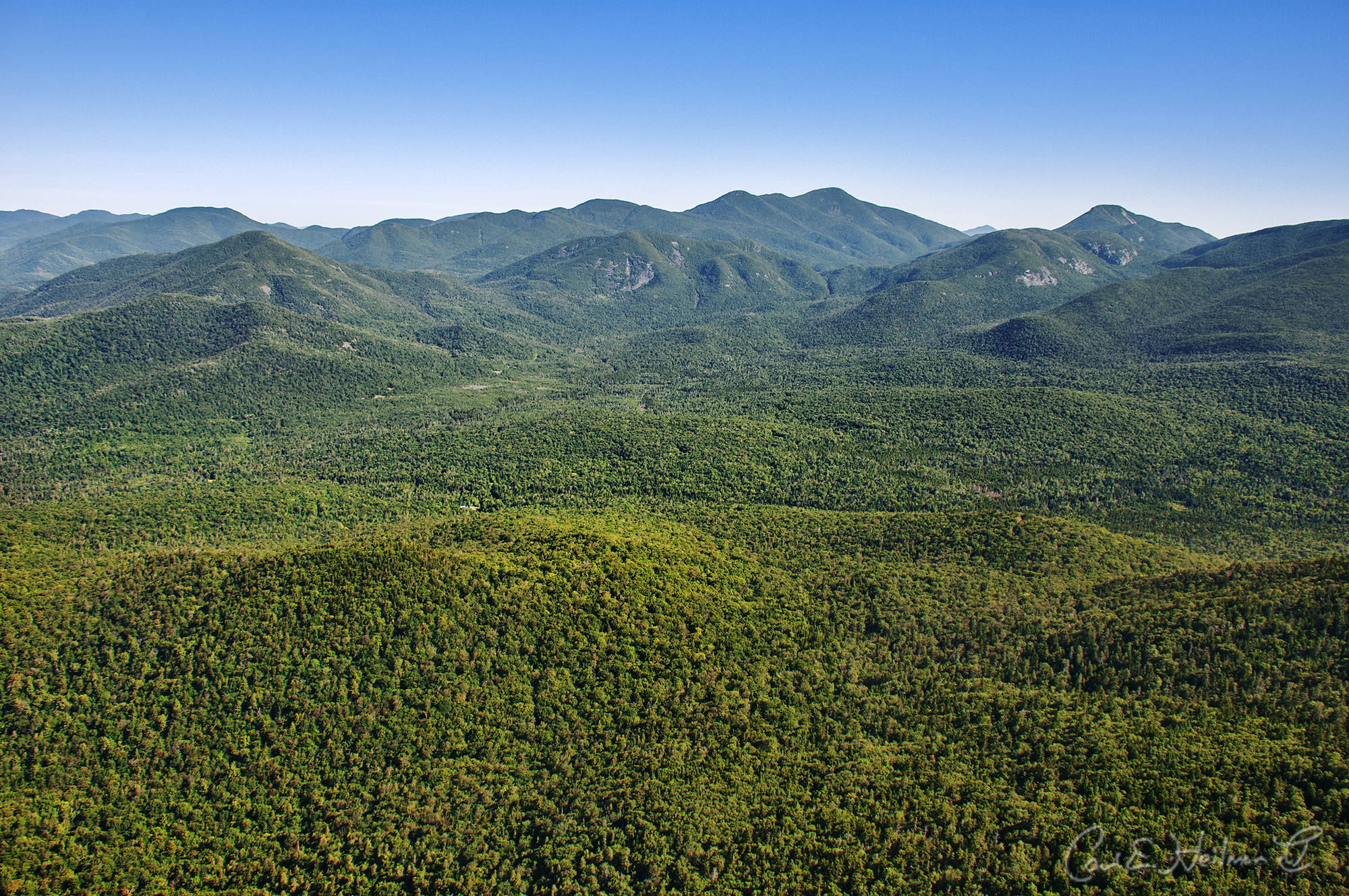
The Adirondack Park Agency (APA), with a staff of 54 people and an 11 member board, provides oversight of the administration of the Forest Preserve and oversees long-range land use planning for the public and private lands of the Park. The Department of Environmental Conservation (DEC) is tasked with the care and custody of our Forest Preserve and protects the public who use these lands for hunting, fishing, respite, and recreation.
With roughly 130,000 year-round residents in more than 100 communities, the Park is a source of business and culture as well: arts, craft making, sports, hunting and fishing, farming, forestry, and other entrepreneurial efforts merge with the Park’s spectacular setting to create a place that is truly special.
Current Impacts of Climate Change in the Adirondacks
The impacts of climate change have already manifested in Adirondack communities, but most specifically in the Towns of Jay and Keene. Tropical Storm Irene wiped away much of their crucial municipal infrastructure in a single weather event. The Keene Firehouse fell into the river and Route 73, the artery through which the majority of the region’s visitors and tourism dollars arrive, was sliced in half by their raging river.
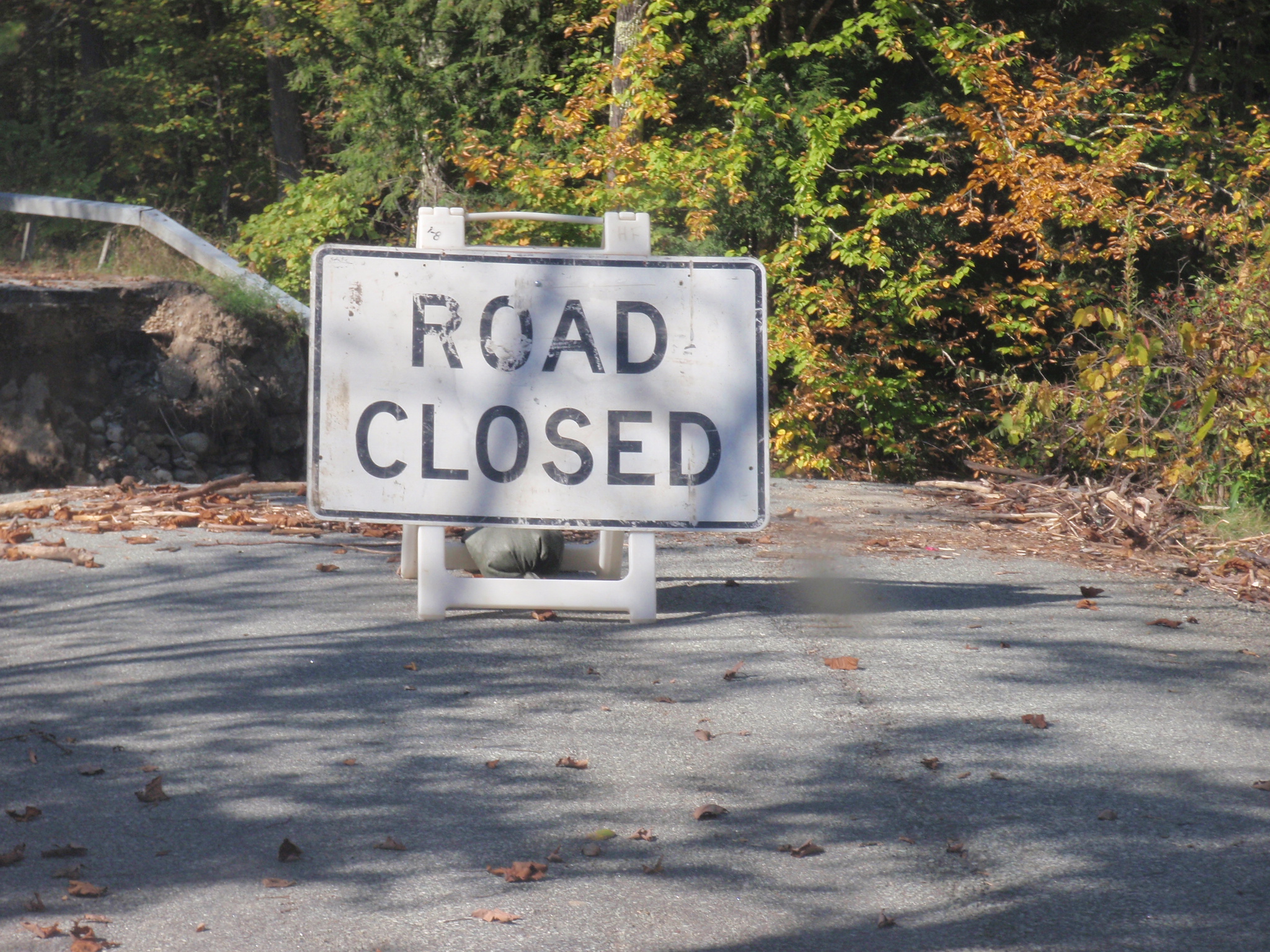
Access to much of the adjacent Forest Preserve was cut off for days, and state land infrastructure was washed away, requiring repairs at the expense of New York State taxpayers, and removing a supply of available recreation opportunities that drive business in the area. During the storm, stream gauges at Ausable Forks recorded discharge rates over two times greater than the next highest discharge event which occurred in January 1996.
Scientists predict that storms such as Irene, which caused devastating flooding in the Lake Champlain Basin, will become more frequent and intense. Increasingly sporadic and violent storm events will continue to challenge the integrity of every type of infrastructure that our communities depend on for safety, transportation, communication, and public health.
Future Impacts on Adirondack Ecology and Economics
Boreal Habitat At Risk
The Adirondack Park is host to some of the southernmost stretches of boreal habitat in North America. In boreal habitat, you might find large swaths of even-aged conifers, various wetland types and a number of signature Adirondack species.
Moose, Spruce Grouse, Bicknell’s Thrush, American Marten, and the Little Brown Bat are examples of species living in these habitats that are threatened by small but significant changes to their climate. According to a 2006 U.S. Fish and Wildlife Service report, in New York State alone, wildlife viewers spent $1.6 billion annually to view and photograph these species.
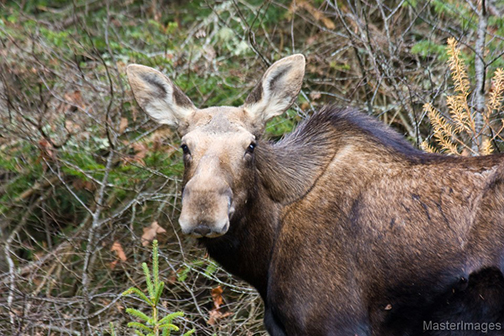
There is one memory that many of the Park’s visitors experience and never forget: its famous scent of Balsam Fir and Red Spruce. Spruce-fir forests are predicted to decline as a result of climate change in the Adirondacks. They are home to the Spruce Grouse and the Bicknell’s Thrush, which both have unstable populations in the region.
Moose populations are likely to decline as they have in Maine, New Hampshire, Vermont, and Minnesota, due to rising temperatures that will cause heat stress and subsequent threats of persisting tick populations and competing ranges with white-tailed deer.
Threatened Alpine Habitat
If you have ever had the pleasure of standing on our state’s highest summit, Mount Marcy or driving to the top of the Whiteface Veteran’s Memorial Highway, you have stood amongst an alpine habitat.
Alpine habitat in the Adirondacks exists only above four-thousand feet in elevation and is found only in a few of these special locations. The habitat is characterized by a short growing season, cold temperatures, high winds, and intense solar radiation. Lichens, grasses, wildflowers, and shrubs like Diapensia, Sheep Laurel, and Alpine Azalea all live in these communities. In the face of a changing climate, there is a strong reason to believe that some alpine communities will be greatly affected and potentially driven off our Adirondack peaks.
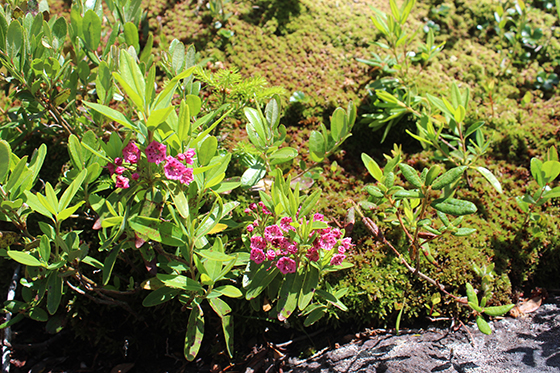 Sheep Laurel on Adirondack Summit
Sheep Laurel on Adirondack Summit
Winter Tourism as an Economic Driver
While other parts of the state rely on a more diverse economy to thrive in winter months, the tourism-based economy of the Park has its own unique challenges in having to provide year-round recreational activity. For example, downhill and cross-country skiing, ice fishing, ice climbing, snowmobiling, snowshoeing, and activities related to the offerings of the Olympic facilities in Lake Placid require the region’s climate to provide stable winter conditions from December through March.
Jerry Jenkins, a renowned scientist who has written about climate change in the Adirondacks, clearly states that shorter seasons and inadequate winter conditions may reduce the number of visitors interested in winter activities in the Park. Whiteface and Gore mountains offer world-class skiing but will require more snowmaking as warmer temperatures make the snowpack less stable. Warm air temperatures may reduce the usability of snowmobile trails, causing communities such as the Town of Webb, whose economy depends on snowmobile traffic in the winter, to suffer during a large part of the winter season.
Communities such as Keene Valley and Wilmington also offer world-class ice climbing, drawing an only recently discovered network of clientele who have infused new dollars in the region but require sustained alpine conditions for this type of recreation. The common theme is clear: as our global mean temperature rises and winters become shorter and more sporadic, Adirondack towns and villages will struggle through this season of their economy, making their collective future uncertain.
The Role of our Adirondack Park in Fighting Climate Change
Global climate change poses real, long-term threats to the Adirondack Park’s natural and human communities and the world. Global action to aggressively address this threat starts at the local and landscape level.
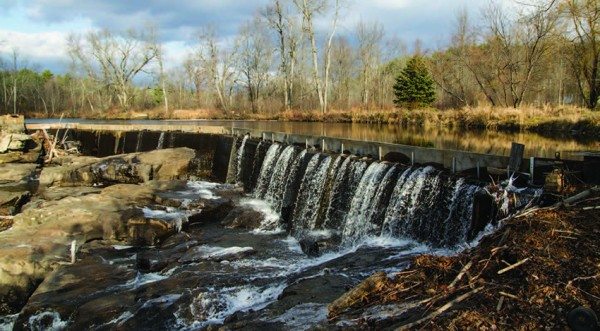 Wadhams Dam- Photo from Adirondack Explorer
Wadhams Dam- Photo from Adirondack Explorer
As the largest protected landscape in the contiguous United States, the Adirondack Park can be a model for a large public/private conservation landscape combating climate change. This means prioritizing the protection of nature, increasing carbon sequestration, promoting clean energy, reducing greenhouse gas emissions, fostering resilient communities, and stabilizing energy production and supply infrastructure.
While the North Country comprises 26 percent of the state’s land area, it produces only 3 percent of the state’s Greenhouse Gases (GHGs). However, the region’s per capita emissions are higher than average, due to transportation-related emissions and a heavy reliance on fuel oil.
The north country is a net exporter of wind and hydropower, with wind located outside the Park’s boundary, and a significant amount of small-scale hydropower coming from within the Park’s boundary.
Based on conservative estimates, the forest biomass and soils of the Adirondack Park contain roughly one-quarter billion metric tons of carbon. Net sequestration rates into aboveground biomass in the Adirondack Park are roughly 600,000 metric tons of carbon dioxide equivalent per year.
The Adirondack Park stores 113 times as much carbon as it emits each year.
Considerations For Maximizing the Adirondack Carbon-Offset
Protected Wildlands
Protected, undisturbed forestlands serve a vital role in mitigating climate change by sequestering human generated GHGs. Science dictates that land stewardship is the most effective method to capture GHGs.
In contrast, land disruption by way of forestry and agriculture diminish that function. With millions of acres of both state-owned and privately owned forest lands throughout the Park, people across New York State derive significant benefits from the health and vibrancy of the Park’s landscape. Natural landscapes and the Adirondacks, in particular, play a vital role in mitigating climate change.
As one of the largest unfragmented forested landscapes in the nation, the Park is able to absorb more carbon dioxide than its local human communities produce and is functionally carbon negative. This should be celebrated as part of New York’s fight against climate change.
How Wild Character Fits into the Equation
As New York State ramps up renewable energy production, it will be important to remember that the Adirondack economy depends on its wild character.
More than 12 million people visit the Adirondacks on an annual basis to enjoy wild landscapes, unbroken scenery, and peace and quiet. It will be necessary to defend the key attractions of this region because human communities are integral to the viability of a Park on this scale.
Reducing Consumption
The tourism economy of the Adirondacks will need dedicated support in the transportation sector as New York grapples with reducing climate-changing emissions related to vehicle travel.
Our visitors mostly arrive by internal combustion automobile, resulting in above average per capita emissions in this sector when compared to other regions. Adirondack Park stakeholders have identified this hurdle, with the Common Ground Alliance calling for support from the state with transitioning to a clean transportation system for the workforce, tourism, and residential sectors.
.JPG)
Forest Management is Connected to Climate Change
Any serious effort to fight climate change will need to include a dedicated carbon sequestration program. In the Adirondacks, more than 2.5 million acres of “Forever Wild” Forest Preserve provides an already established carbon sink, which requires careful management to preserve ecosystem functions in the face of growing threats such as overcrowding by recreationists.
An Assessment of What We Have
On roughly 750,000 acres of private lands in the Adirondacks, New York owns the development rights and many recreation rights through the purchase of conservation easements. The management of these lands are intended to be overseen by the incredibly hard-working men and women of the Department of Environmental Conservation, but they need more resources to ensure that these complicated and individualized landowner agreements are complied with.
New York purchases conservation easements to preserve ecosystem functions that support clean water and air for the residents of this state and provide recreation. Taxpayers deserve to know that they are getting what they have paid for.
As the Legislature considers the role our forests will play in sequestering carbon, the Adirondack Council recommends that the legislature inquires about the status of conservation easement terms and values, compliance, modifications, enforcement, and transparency. A recent DEC proposal to amend and weaken a state-owned conservation easement inside the Adirondack Park, and try to offset the action with improved conservation outside the Park, has caused Park advocates to object.
Better Incentivising Positive Change
To better combat climate change we should be incentivizing the growth of trees. Sustainable forestry prevents deforestation and large-scale development, and under the right conditions can promote carbon sequestration if growth rates exceed cutting rates.
Carefully managed forests can absorb and store more carbon dioxide than is produced by harvesting, processing and burning the fuel. Forest harvest levels across the Park must be balanced so that the carbon equation does not forsake harvest limits in favor of the unchecked burning of biomass.
Essentially, biomass should come from forests certified for sustainable harvesting and should result in decreased net carbon emissions, short term, and long term. We should ensure that any consideration of including biomass as clean energy source require rigorous scientific analysis and subsequent reporting to the legislature after an initial review.
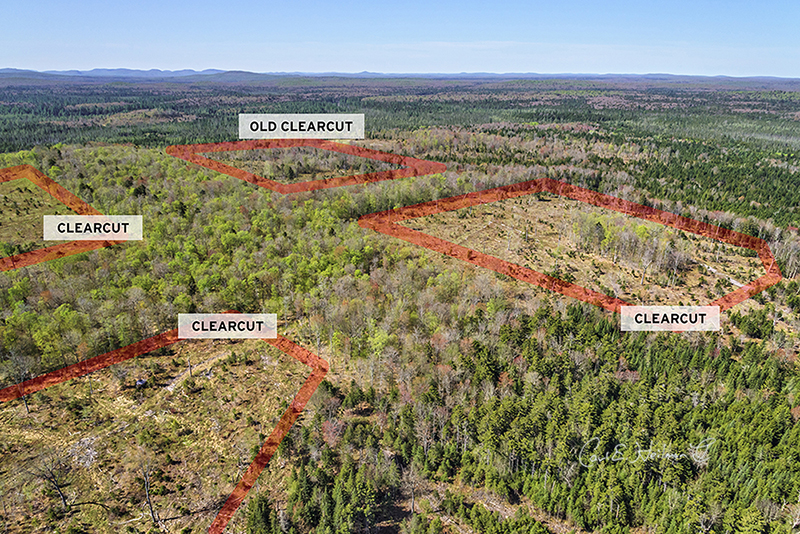
Cumulative Impacts of Clear-Cuts
The Adirondack Park has recently experienced a dramatic uptick in APA-defined clearcutting practices. Since 2013, more than 6,500 acres of Adirondack Park Agency-defined clear-cut permits have been issued in the Park. Currently, the Adirondack Park Agency does not consider the cumulative impacts of those clear-cuts. It should be recognized that on some limited percentage of private forest land what the Adirondack Park Agency defines as a “clear-cut” might be a smart and scientifically desirable forest management practice. It should also be recognized that large or extensive clear-cutting would have negative impacts on the wild character of the Adirondack Park, or potentially feed a net-increase in climate emissions.
The Adirondack Park Agency should work with all stakeholders to update its definition of clearcutting and do a cumulative impact analysis of such cutting on the wild forest character of the public and private lands in the Adirondack Park and determine and set appropriate limits.
Promoting Renewable Energy while Defending Natural Resources and Wild Character
The Adirondack Park can serve as a global model for supporting accelerated renewable energy development while preserving critical natural resources and wild character aesthetics across a conserved landscape.
As the legislature considers policies related to renewable energy promotion, deployment and siting, the Adirondack Council offers the following recommendations:
- Defend Forever Wild (Article XIV) and Intensify Carbon Sequestration Efforts: Renewable energy projects should not lead to net deforestation or reduce carbon sequestration. New York State defends its Adirondack forests with the strongest conservation law in the world, Article XIV of the State Constitution, the “Forever Wild” provision.
- Ensure Decisions are Science-Based: Use the best available science to determine the most appropriate design, siting, placement and scale of renewable projects to minimize and mitigate impacts to water, wildlife, vegetation, habitat, soil and other natural resources.
- Maximize Energy Conservation: Reduce energy consumption and institutionalize conservation practices that reduce local and regional energy demand. Aging homes and public infrastructure use more energy than currently necessary and end-use efficiencies would reduce demand.
- Support Renewable Energy over other Sources, and Plan Ahead.
- Promote localized solar, hydro, small scale wind generation to reduce emissions: Maximize underground energy transmission infrastructure to protect wild character aesthetics and increase infrastructure resiliency. Support a climate-smart, energy smart, resilient and clean green energy Park. Encourage renewable energy development, with partners, through comprehensive regional, local and state planning and zoning to accelerate developments in a manner consistent with other land use goals.
- Use Careful Siting and Design to Respect Scenic Vistas and Wild Character: The aesthetic value and beauty of the Adirondack landscape is one of the Park’s great treasures.
Potential projects should consider placement, avoiding wetlands, protecting wildlife corridors, scale, minimizing visual impacts, co-location, public engagement, community benefits, and use the best available technology. To learn more about our Clean Energy and Climate Policy, click here.
Looking Ahead
The Adirondack Park is a national treasure and has a leg up on other regions of the state in fighting climate change. Wildlands management, renewable energy siting, end-use efficiencies, and modernized transportation infrastructure can coalesce in the Adirondacks to contribute a net sink for green house gasses in New York State.
We commend the Governor and Legislature for their mutually complementary commitments this year to fight climate change and stand ready to partner in securing a climate victory this year.




